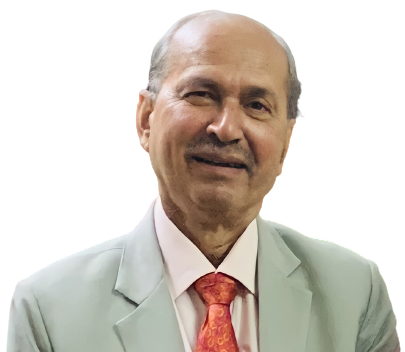whispers in the corridors

The National Dairy Development Board (NDDB) envisions transforming India’s dairy sector into a globally competitive, inclusive, and sustainable powerhouse by 2047. Already the world's largest milk producer, India aims to leverage dairy as a driver of rural prosperity, women's empowerment, and national pride. Dr. Meenesh Shah, Chairman of National Dairy Development Board, outlined the strategic roadmap during an interview with Whispers in the Corridors (WITC)
NDDB's vision is built on five strategic pillars: enhancing animal productivity through genetic advancements, expanding the organised dairy sector to cover 3.5 lakh villages, increasing value-added products (VAPs) share from 25% to 50%, boosting global trade participation by targeting 10% share in global dairy exports, and promoting sustainable dairying through climate-smart practices. The ambitious White Revolution 2.0 aims to raise milk procurement by 50% and empower women farmers.
Technology plays a vital role in achieving this vision. NDDB is investing in genomic tools like GAUCHIP and MAHISHCHIP, and indigenous sexed semen tech (GauSort). The National Digital Livestock Mission enables animal traceability through digital Pashu Aadhaar, while apps like INAPH and Bharat Pashudhan enhance field service delivery. Innovations in feeding, fodder, and animal health are improving yields while reducing emissions. Blockchain, AI/ML, and automation are being adopted for supply chain transparency and herd health monitoring.
On sustainability, NDDB has deployed over 35,000 biogas plants and is scaling up centralized bio-CNG systems. Women-led manure cooperatives and solar-powered operations further reduce the sector's carbon footprint. India’s net-zero emissions goal for 2070 is supported through carbon credits and natural farming practices.
Empowering small and marginal farmers, especially women, is central to NDDB’s approach. Women constitute 70% of dairy labor. NDDB supports over 53,000 women-only cooperatives and 17 all-women Milk Producer Organizations (MPOs). Initiatives like A-HELP and the Women Dairy Cooperative Leadership Programme enhance women's participation in veterinary care, governance, and entrepreneurship.
India is also strengthening its global dairy competitiveness by ensuring quality, diversifying into high-value dairy products, and expanding export markets. NDDB’s export strategy targets countries like Bangladesh, UAE, and Japan.
Finally, Public-Private Partnerships (PPPs) are encouraged in infrastructure, technology, and skill development, ensuring innovation while keeping farmers at the center.
NDDB’s integrated, tech-driven, and inclusive model is set to make India the Dairy to the World by 2047.
To know more, read the full interview in the September issue of Whispers in the Corridors magazine.

Send Feedback
- IAS officers get field postings in MP (UPDATED)
- Deepak Kumar Saxena is Public Relations Commissioner in MP (UPDATED)
- P K Singh appointed as ED, DSIIDC, Delhi (UPDATED)
- 15 IAS officers reshuffled in Delhi (UPDATED)
- Major reshuffle of IPS officers in UP (UPDATED)
- OMC empowers women leaders through ‘LeaDHer 2025’ DEI program (UPDATED)
- Reshuffle of IPS officers in MP (UPDATED)
- S Thirumala Selvam appointed as Director (Proj), SMFCL (UPDATED)
- Jatinderjt Singh Mann selected as Director (Mktg), MMTC Ltd (UPDATED)
- Abhay Kumar Singh appointed as DG, GASAB Secretariat, CAG (UPDATED)
- 16 officers of SCS of MP promoted as IAS (UPDATED)
- Countdown begins for India’s first SAF Conclave and Awards (UPDATED)
- Vijay Sakhare appointed as ADG, NIA (UPDATED)
- Damodar Valley Corporation hosts HR Meet
- IPS officers get new responsibilities in Tripura
- 19 IAS officers get new responsibilities in Haryana
- Army’s Annual Foreign Service Attachés Briefing’ at an undisclosed location
- Railways to phase out parcel coaches on passenger trains !
- 21 IES officers promoted to Junior Administrative Grade
- Jain is now Chairman Arunachal ARC
- Kolkata Metro to add more trains
- Allahabad High Court gets two Judges
- Sarada Bhushan Mohanty yet to get orders for CMD, IREL
- Interviews for CMD, RCF on Sept 16
- Appointment of CMD, New Space India Ltd on deputation/contract basis
- Raj Nehru assigned additional charge of DG, SJHIFM
- Rohit Malpani to join Cabinet Secretariat ?
- T W Sherpa appointed as Ambassador to Vietnam
- Central deputation tenure of Ms Setfi Sofi extended
- Tenure of Ms Richa Pandey as Director, NPPA curtailed
- Mohit Chawla to join ITBP
- Files in MoHA have started moving for next year’s declaration of Maoism free India
- SEBI Member to retire in October
- Social media: A splendid tool for new generation officers
- Sanjeev Sanyal will be seen in a new avatar in Modi government soon!
- Where will Barthwal go?
































